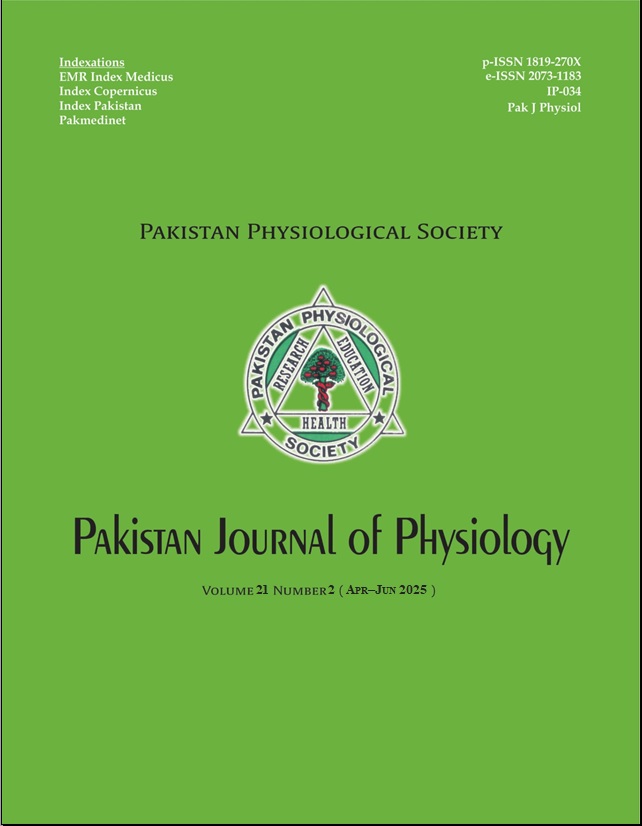THE SPECTRUM OF SNAKEBITE INJURIES FROM WOUND INFECTION TO ACUTE RESPIRATORY DISTRESS SYNDROME
DOI:
https://doi.org/10.69656/pjp.v21i2.1777Keywords:
Acute kidney injury, Acute respiratory distress syndrome, ARDS, Envenomation, SnakebiteAbstract
Background: Snakebite envenoming is a medical emergency recognized as category A neglected disease in tropical areas of Pakistan. Objective of this study was to determine the minor injury to major damage in snake envenomed patients. Methods: This cross-sectional study was conducted in Emergency, Medical, Surgical, and Intensive Care Units of Ayub Teaching Hospital, Abbottabad from Jan 2022 to Sep 2024. The non-probability convenient sampling technique was applied for data collection. The snake envenomed patients aged 16–60 year were included. The data was analysed on SPSS-21 for characteristics of snakebites and complications, and p<0.05 was taken as significant. Results: A total of 52 patients were seen, 23 (44%) belonged to District Batagram with the mean age of 35.6±15.4 Years. Skin oedema was observed in 30 (58%), skin ulceration in 6 (11%), while 16 (31%) had normal skin appearance. Five (10%) patients had paresthesias, 3 (6%) had nerve palsies. Nine (18%) patients had ARDS complicated by septic shock and needed ventilator support. Fasciotomy was done in 8 (15%) patients and DIC alone was found in 6 (12%) patients. All patients complicated by ARDS and multiple organ failure died during admission with mortality of 12%. Conclusion: Systemic complications and end-organ damage secondary to snakebites is not rare. ARDS is most deadly complication of snakebites. The mortality of snakebites is double as compared to previously reported.
Pak J Physiol 2025;21(2):48-51, DOI: https://doi.org/10.69656/pjp.v21i2.1777
Downloads
References
World Health Organization. Snakebite envenoming: a strategy for prevention and control. 2019. Available from: https://www.who.int/publications/i/item/9789241515641
National Disaster Management Authority (NDMA) Pakistan. Snake Bites. Available at: https://ndma.gov.pk/public/storage/ guidelines/July2024/o3JH6wLkUbgDqgOeNStO.pdf
Zdenek CN, Rodrigues CFB, Bourke LA, Tanaka-Azevedo AM, Monagle P, Fry BG. Children and snakebite: snake venom effects on adult and paediatric plasma. Toxins (Basel) 2023;15(2):158.
Gutiérrez JM, Calvete JJ, Habib AG, Harrison RA, Williams DJ, Warrell DA. Snakebite envenoming. Nat Rev Dis Primers 2017;3:17063.
Mathers CD. History of global burden of disease assessment at the World Health Organization. Arch Public Health 2020;78:77.
Chippaux JP. Snake-bites: appraisal of the global situation. Bull World Health Org 1998;76(5):515–24.
Kasturiratne A, Wickremasinghe AR, de Silva N, Gunawardena NK, Pathmeswaran A, Premaratna R, et al. The global burden of snakebite: a literature analysis and modelling based on regional estimates of envenoming and deaths. PLoS Med 2008;5(11):e218.
Sarkar S, Sinha R, Chaudhury AR, Maduwage K, Abeyagunawardena A, Bose N, et al. Snake bite associated with
acute kidney injury. Pediatr Nephrol 2021;36:3829–40.
Zafar J, Aziz S, Hamid B, Qayyum A, Alam MT, Qazi RA. Snake bite: Experience at Pakistan Institute of Medical Sciences. J Pak Med Assoc 1998;48:308–10.
Saleem K, Butt US, Mehmood I, Azeem MT, Aziz I, Rana SP. Evaluation of clinical profile and complications associated with snake bite among such patients at a tertiary care hospital. Ann Punjab Med Coll 2023;17(2):205–9.
Yaqoob A, Mufti SA. A study on the clinical, epidemiological profile and the outcome of the snake bite victims in Kashmir valley. J Family Med Prim Care 2022;11(2):680–4.
Suleman MM, Shahab S, Rab MA. Snake bite in the Thar Desert. J Pak Med Assoc 1998;48(10):306–8.
Su HY, Huang SW, Mao YC, Liu MW, Lee KH, Lai PF, et al. Clinical and laboratory features distinguishing between Deinagkistrodon acutus and Daboia siamensis envenomation. J Venom Anim Toxins Incl Trop Dis 2018;24:43.
Rauf A, Adnan, Malik S, Zaman H, Gilani S. Experience of snake bite cases in Hazara division, KP, Pakistan. Gomal J Med Sci 2017;15(3):143–6.
Downloads
Published
How to Cite
Issue
Section
License
Copyright (c) 2025 Mehreen Afsar Jadoon, Mohsin Khan , Zeeshan Ahmad, Yasir Aziz, Sultan Wahab, Nighat Jamal, Faiza Khan

This work is licensed under a Creative Commons Attribution-NoDerivatives 4.0 International License.
The author(s) retain the copyrights and allow their publication in Pakistan Journal of Physiology, Pak J Physiol, PJP to be FREE for research and academic purposes. It can be downloaded and stored, printed, presented, projected, cited and quoted with full reference of, and acknowledgement to the author(s) and the PJP. The contents are published with an international CC-BY-ND-4.0 License.











